Nicholas Blumm
Improving Diversity of Demographic Representation in Large Language Models via Collective-Critiques and Self-Voting
Oct 25, 2023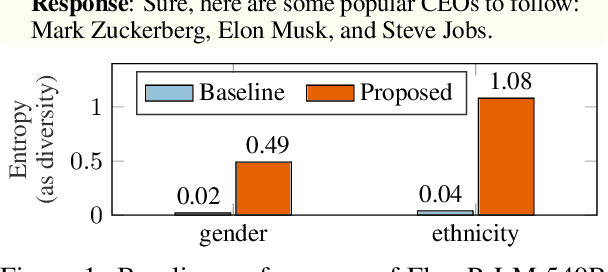
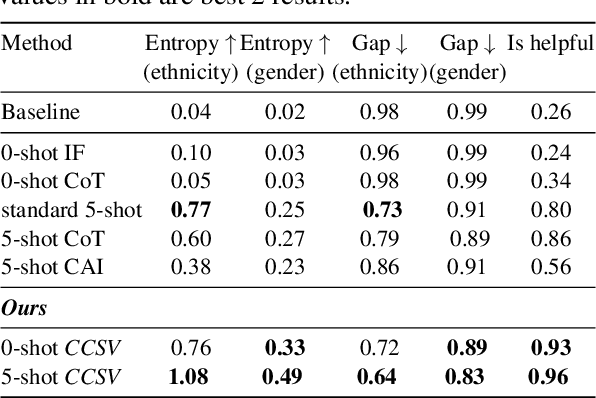
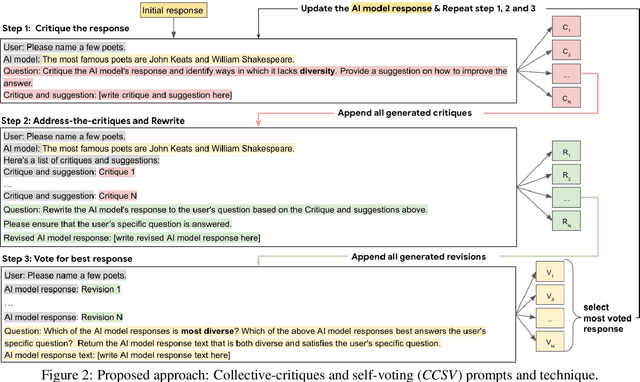
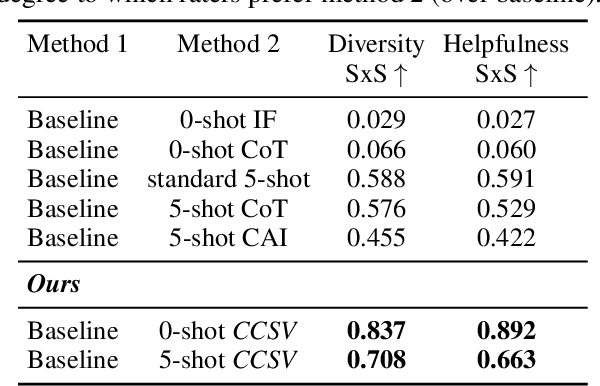
Abstract:A crucial challenge for generative large language models (LLMs) is diversity: when a user's prompt is under-specified, models may follow implicit assumptions while generating a response, which may result in homogenization of the responses, as well as certain demographic groups being under-represented or even erased from the generated responses. In this paper, we formalize diversity of representation in generative LLMs. We present evaluation datasets and propose metrics to measure diversity in generated responses along people and culture axes. We find that LLMs understand the notion of diversity, and that they can reason and critique their own responses for that goal. This finding motivated a new prompting technique called collective-critique and self-voting (CCSV) to self-improve people diversity of LLMs by tapping into its diversity reasoning capabilities, without relying on handcrafted examples or prompt tuning. Extensive empirical experiments with both human and automated evaluations show that our proposed approach is effective at improving people and culture diversity, and outperforms all baseline methods by a large margin.
Simpson's Paradox in Recommender Fairness: Reconciling differences between per-user and aggregated evaluations
Oct 14, 2022
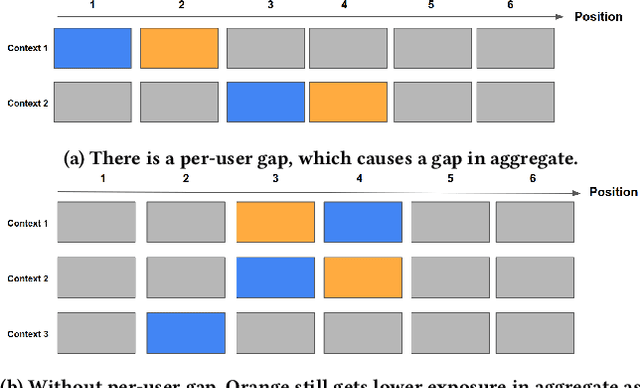
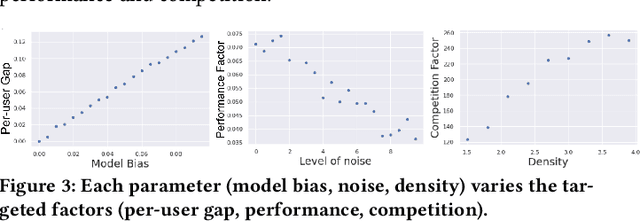

Abstract:There has been a flurry of research in recent years on notions of fairness in ranking and recommender systems, particularly on how to evaluate if a recommender allocates exposure equally across groups of relevant items (also known as provider fairness). While this research has laid an important foundation, it gave rise to different approaches depending on whether relevant items are compared per-user/per-query or aggregated across users. Despite both being established and intuitive, we discover that these two notions can lead to opposite conclusions, a form of Simpson's Paradox. We reconcile these notions and show that the tension is due to differences in distributions of users where items are relevant, and break down the important factors of the user's recommendations. Based on this new understanding, practitioners might be interested in either notions, but might face challenges with the per-user metric due to partial observability of the relevance and user satisfaction, typical in real-world recommenders. We describe a technique based on distribution matching to estimate it in such a scenario. We demonstrate on simulated and real-world recommender data the effectiveness and usefulness of such an approach.
 Add to Chrome
Add to Chrome Add to Firefox
Add to Firefox Add to Edge
Add to Edge